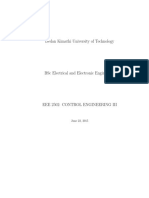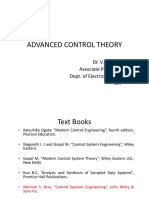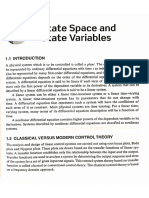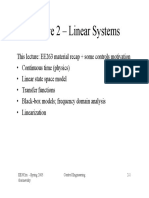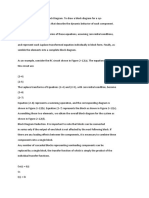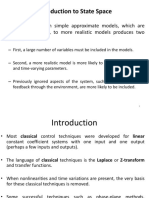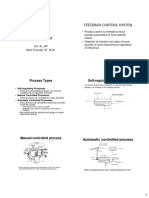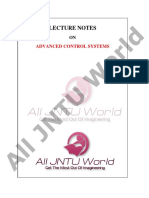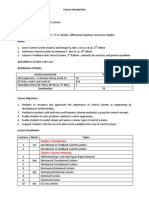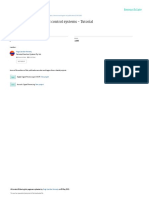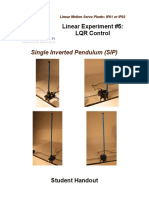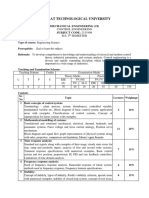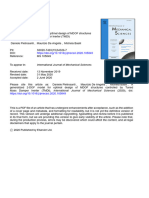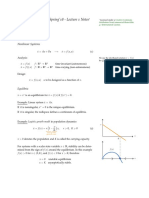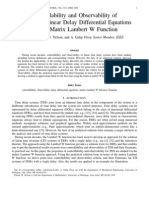0% found this document useful (0 votes)
10 views14 pagesEEE 512 Lecture Module (Main) I
The document discusses classical and modern control theories, highlighting the limitations of classical methods and the advantages of modern state-space approaches. It explains key concepts such as state variables, state vectors, and provides examples of state-space representations for various systems. Additionally, it outlines the process for deriving state-space equations from differential equations and includes assignments for practical application.
Uploaded by
kolapograceoluwabukolaCopyright
© © All Rights Reserved
We take content rights seriously. If you suspect this is your content, claim it here.
Available Formats
Download as PDF, TXT or read online on Scribd
0% found this document useful (0 votes)
10 views14 pagesEEE 512 Lecture Module (Main) I
The document discusses classical and modern control theories, highlighting the limitations of classical methods and the advantages of modern state-space approaches. It explains key concepts such as state variables, state vectors, and provides examples of state-space representations for various systems. Additionally, it outlines the process for deriving state-space equations from differential equations and includes assignments for practical application.
Uploaded by
kolapograceoluwabukolaCopyright
© © All Rights Reserved
We take content rights seriously. If you suspect this is your content, claim it here.
Available Formats
Download as PDF, TXT or read online on Scribd
/ 14

